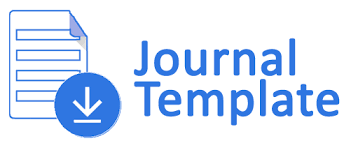Improving Students' Learning Outcomes On Polynomial Materials In Class XI MIPA 2 MAN Kota Singkawang Using The Group Investigation Model
DOI:
https://doi.org/10.29407/pn.v8i1.17922Keywords:
Group Investigation, learning outcomes, learning activityAbstract
Based on the experience of teaching Polynomial material, many students' learning outcomes are still below the standard of completeness. One of the factors that cause it is the learning model. The purpose of this research is to improve the learning outcomes of students in class XI MIPA 2 MAN Kota Singkawang by applying the Group Investigation learning model to the Polynomial material for the 2021-2022 school year. The Group Investigation learning model is a cooperative learning model that involves students actively in learning. This research is Classroom Action Research which consists of 2 cycles, each cycle consists of 2 meetings. Data collection techniques using student learning tests. To find out changes in learning outcomes, an analysis of the test results was carried out using a paired t. The results of the study after the first cycle of the average student learning outcomes were 71.39 with learning completeness of 75%. After the second cycle, the average student learning outcomes were 81.11 with 91.67% learning completeness. From the results of the comparison of post-test cycle I with post-test cycle II, the effect size is 1.15, which means that the effectiveness is large. The results of the paired t-test obtained showed a P-value of 0.000 in the first and second cycles. This shows that there is a significant change in the results of the pre-test and post-test after the implementation of the Group Investigation model, meaning that the Group Investigation model can improve student learning outcomes.
Downloads
References
Arikunto, Suharsimi.2003. Dasar-dasar Evaluasi Pendidikan. Jakarta. Rineka Cipta.
Bistari. 2015. Muwujudkan Penelitian Tindakan Kelas. Pontianak, Ekadaya Multi Inovasi.
Djudin Tomo, 2010. Statistik Parametrik Dasar Pemikiran dan Penerapannya dalam Penelitian. Pontianak, FKIP UNTAN Pontianak.
Djamaluddin Ahdar, 2019. Belajar dan Pembelajaran 4 Pilar Peningkatan Kompetensi Pedagogis. Sulawesi Selatan, CV Kaffah Learning Center.
Hamzah Ali dan Muhlisrarini. 2013. Perencanaan dan Strategi Pembelajaran Matematika, Jakarta: PT Raja Grafindo Persada.
Huda Miftahul. 2013. Model-Model Pengajaran dan Pembelajaran, Malang, Pustaka Pelajar.
Kemdikbud. 2017, Model-model Pembelajaran, Jakarta, Kemdikbud.
Komalasari, Kokom. 2013. Pembelajaran Konstekstual Konsep dan Aplikasi, Bandung, PT Refika Aditama.
Muklis, Ngapiningsih, 2021. Matematika Untuk SMA/MA Peminatan Matematika dan Ilmu-Ilmu Alam Kelas XI Semester 2, Yogyakarta, Intan Pariwara.
Miyanto, Astuti Yuni, 2019. Matematika Untuk SMA/MA Peminatan Matematika dan Ilmu-Ilmu Alam Kelas XI Semester 2, Yogyakarta, Intan Pariwara.
Rusman, 2014. Model-model Pembelajaran, Mengembangkan Profesionalisme Guru, Jakarta. PT Raja Grafindo Persada.
Setyosari Punaji, 2015. Metode Penelitian Pendidikan dan Pengembangan, Malang, Prenadamedia Group.
Slameto, 2013. Belajar dan Faktor-faktor yang Mempengaruhinya, Jakarta, Rineka Cipta.
Sutardi. 2015. Peningkatan Aktivitas Belajar Peserta didik dan Kemampuan Komunikasi Matematika Untuk Kimia dengan Model Pembelajaran Learning Cycle 5E di Kelas XI-IPA 2 MAN Model Singkawang Tahun Pelajaran 2013/2014. Jurnal Sains dan Teknologi, XI No 2, 100 -109.
Yatimah Durotul. 2017. Landasan Pendidikan, Jakarta. CV Alumgaden Mandir
Downloads
Published
Issue
Section
License
Authors who publish with this journal agree to the following terms:
- Copyright on any article is retained by the author(s).
- The author grants the journal, right of first publication with the work simultaneously licensed under a Creative Commons Attribution License that allows others to share the work with an acknowledgment of the work’s authorship and initial publication in this journal.
- Authors are able to enter into separate, additional contractual arrangements for the non-exclusive distribution of the journal’s published version of the work (e.g., post it to an institutional repository or publish it in a book), with an acknowledgment of its initial publication in this journal.
- Authors are permitted and encouraged to post their work online (e.g., in institutional repositories or on their website) prior to and during the submission process, as it can lead to productive exchanges, as well as earlier and greater citation of published work.
- The article and any associated published material is distributed under the Creative Commons Attribution-ShareAlike 4.0 International License









